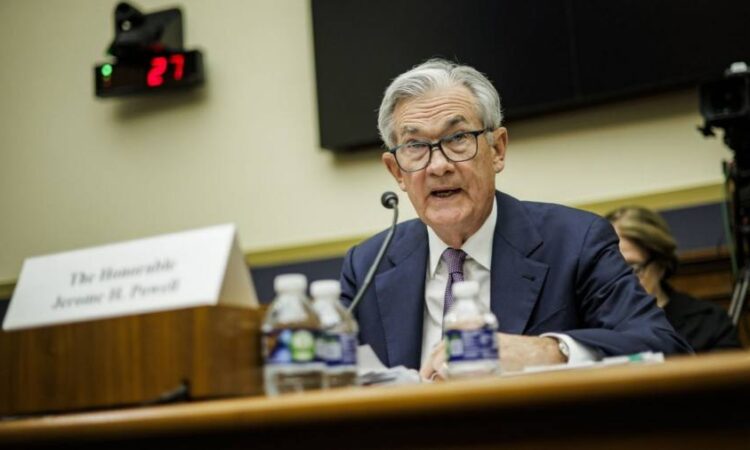
Investors sold off US equities and piled into Treasuries as they were rattled by concerns about the value of US banks’ bond portfolios, while preparing for a report on payrolls that will affect Federal Reserve policy.
The blue-chip S&P 500 stock index closed down 1.8 per cent on Thursday and the tech-heavy Nasdaq Composite fell 2.1 per cent. Both indices recorded their biggest declines since February 21.
The S&P 500’s financial sub-index dropped by 3.9 per cent on worries about the value of banks’ holdings of Treasuries and other debt instruments. The move followed crypto-focused Silvergate Bank’s announcement on Wednesday that it would wind down amid depositor withdrawals and signs that Silicon Valley Bank planned a share sale to shore up its capital base.
Shares in JPMorgan Chase, Bank of America, Citigroup and Wells Fargo — the four largest US lenders by assets — each fell by between 4.1 per cent and 6.2 per cent.
The downturn in financial stocks came as traders piled into US government debt, with yields on short-dated Treasury bonds falling sharply. Yields on interest rate-sensitive two-year Treasuries fell 19 basis points to 4.89 per cent, while those on the 10-year note dropped 5 basis points to 3.92 per cent. Yields move inversely to bond prices.
The moves came ahead of a US payrolls report on Friday, with data that provides insight on the direction of the economy at a time of strong inflation.
“Holding on to bets on interest rates rising further is now much less attractive and not worth the risk of being surprised by weak labour market data tomorrow,” said Edward Al-Hussainy, senior analyst at Columbia Threadneedle. “The path to least resistance today was to take profits on these bets and dial down exposure to markets.”
Last month’s jobs report was unexpectedly strong, raising investor anticipation for higher interest rates amid hawkish rhetoric from the Fed.
“Good macro news equals terrible market news,” said Florian Ielpo, head of macro and multi-asset portfolio manager at Lombard Odier Investment Managers.
He added that another strong payrolls reading would “confirm that more is needed to curb dynamism in the labour market”.
In his semi-annual congressional testimony this week, Fed chair Jay Powell said the US central bank was willing to return to more aggressive interest rate rises, but stressed “no decision” had been made.
Data released on Thursday showed that US initial jobless claims rose to 211,000 last week, above expectations of 192,000 and the largest increase since October. It was the first time in eight weeks that jobless claims came in above 200,000.
“Even after today’s reported increase, the level of unemployment claims remains very low . . . most companies are either still hiring or are holding on to their employees,” said Joshua Shapiro, chief US economist at consulting firm Maria Fiorini Ramirez.
The dollar index, which measures the US currency against a basket of six peers, fell 0.4 per cent. The index has gained 1.8 per cent in the month as yields on US government debt have increased, and traders have pushed up their forecasts for the peak in the federal funds rate.
European stocks struggled to make headway as investors digested the data. The region-wide Stoxx 600 closed down 0.2 per cent, the German Dax was flat and the French CAC 40 lost 0.1 per cent.
London’s FTSE 100 closed 0.6 per cent lower as mining stocks fell on fears that a stronger dollar would curb profits.
In Asia, China’s CSI 300 dropped 0.4 per cent after weaker than expected Chinese inflation data. Consumer prices rose 1 per cent and producer prices were down 1.4 per cent — its lowest reading since November 2020. Hong Kong’s Hang Seng fell 0.6 per cent on fears that the equity market rally in China-related stocks after the country lifted its zero-Covid policy was waning.
Oil prices fell for the third consecutive day, with international oil benchmark Brent crude and US equivalent West Texas Intermediate falling 1.2 per cent and 1.3 per cent, respectively.
Additional reporting by Kate Duguid in New York





